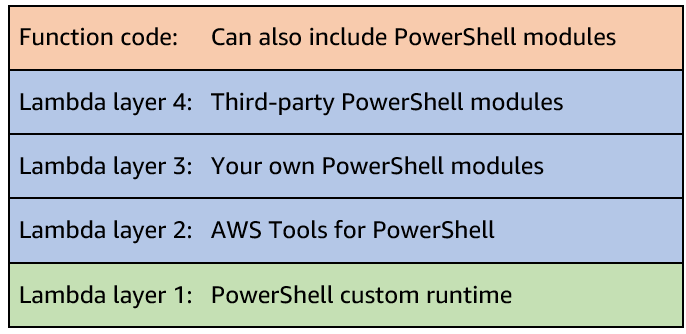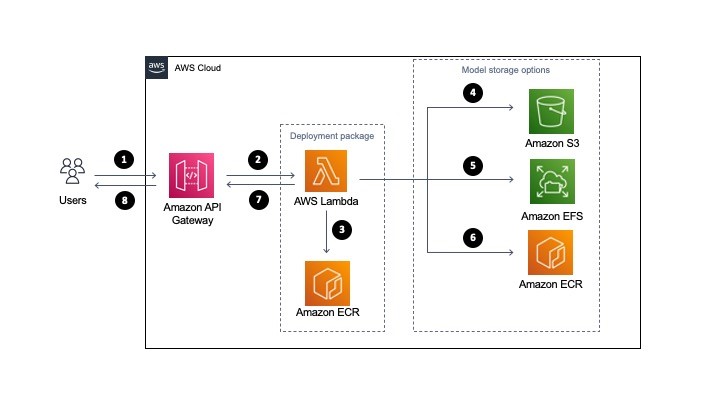AWS Compute Blog
Category: Storage
Quick Restoration through Replacing the Root Volumes of Amazon EC2 instances
This blog post is written by Katja-Maja Krödel, IoT Specialist Solutions Architect, and Benjamin Meyer, Senior Solutions Architect, Game Tech. Customers use Amazon Elastic Compute Cloud (Amazon EC2) instances to develop, deploy, and test applications. To use those instances most effectively, customers have expressed the need to set back their instance to a previous state […]
Our guide to AWS Compute at re:Invent 2022
This blog post is written by Shruti Koparkar, Senior Product Marketing Manager, Amazon EC2. AWS re:Invent is the most transformative event in cloud computing and it is starting on November 28, 2022. AWS Compute team has many exciting sessions planned for you covering everything from foundational content, to technology deep dives, customer stories, and even […]
Lifting and shifting a web application to AWS Serverless: Part 2
In this two-part article, you learn if it is possible to migrate a non-serverless web application to a serverless environment without changing much code. You learn different tools that can help you in this process, like AWS Lambda Web Adaptor and AWS Amplify, and how to solve some of the typical challenges that we have, like storage and authentication.
Lifting and shifting a web application to AWS Serverless: Part 1
In this article, you learn if it is possible to migrate a non-serverless web application to a serverless environment without changing much code. You learn different tools that can help you in this process, like the AWS Lambda Web Adaptor and AWS Amplify.
Introducing Amazon CodeWhisperer in the AWS Lambda console (In preview)
This blog post is written by Mark Richman, Senior Solutions Architect. Today, AWS is launching a new capability to integrate the Amazon CodeWhisperer experience with the AWS Lambda console code editor. Amazon CodeWhisperer is a machine learning (ML)–powered service that helps improve developer productivity. It generates code recommendations based on their code comments written in […]
Building a low-code speech “you know” counter using AWS Step Functions
This post is written by Doug Toppin, Software Development Engineer, and Kishore Dhamodaran, Solutions Architect. In public speaking, filler phrases can distract the audience and reduce the value and impact of what you are telling them. Reviewing recordings of presentations can be helpful to determine whether presenters are using filler phrases. Instead of manually reviewing […]
Extending PowerShell on AWS Lambda with other services
This post expands on the functionality introduced with the PowerShell custom runtime for AWS Lambda. The previous blog explains how the custom runtime approach makes it easier to run Lambda functions written in PowerShell. You can add additional functionality to your PowerShell serverless applications by importing PowerShell modules, which are shareable packages of code. Build your own […]
Orchestrating Amazon S3 Glacier Deep Archive object retrieval using AWS Step Functions
This blog was written by Monica Cortes Sack, Solutions Architect, Oskar Neumann, Partner Solutions Architect, and Dhiraj Mahapatro, Principal Specialist SA, Serverless. AWS Step Functions now support over 220 services and over 10,000 AWS API actions. This enables you to use the AWS SDK integration directly instead of writing an AWS Lambda function as a proxy. One […]
Choosing the right solution for AWS Lambda external parameters
This post is written by Thomas Moore, Solutions Architect, Serverless. When using AWS Lambda to build serverless applications, customers often need to retrieve parameters from an external source at runtime. This allows you to share parameter values across multiple functions or microservices, providing a single source of truth for updates. A common example is retrieving […]
Choosing between storage mechanisms for ML inferencing with AWS Lambda
This post is written by Veda Raman, SA Serverless, Casey Gerena, Sr Lab Engineer, Dan Fox, Principal Serverless SA. For real-time machine learning inferencing, customers often have several machine learning models trained for specific use-cases. For each inference request, the model must be chosen dynamically based on the input parameters. This blog post walks through the architecture […]









